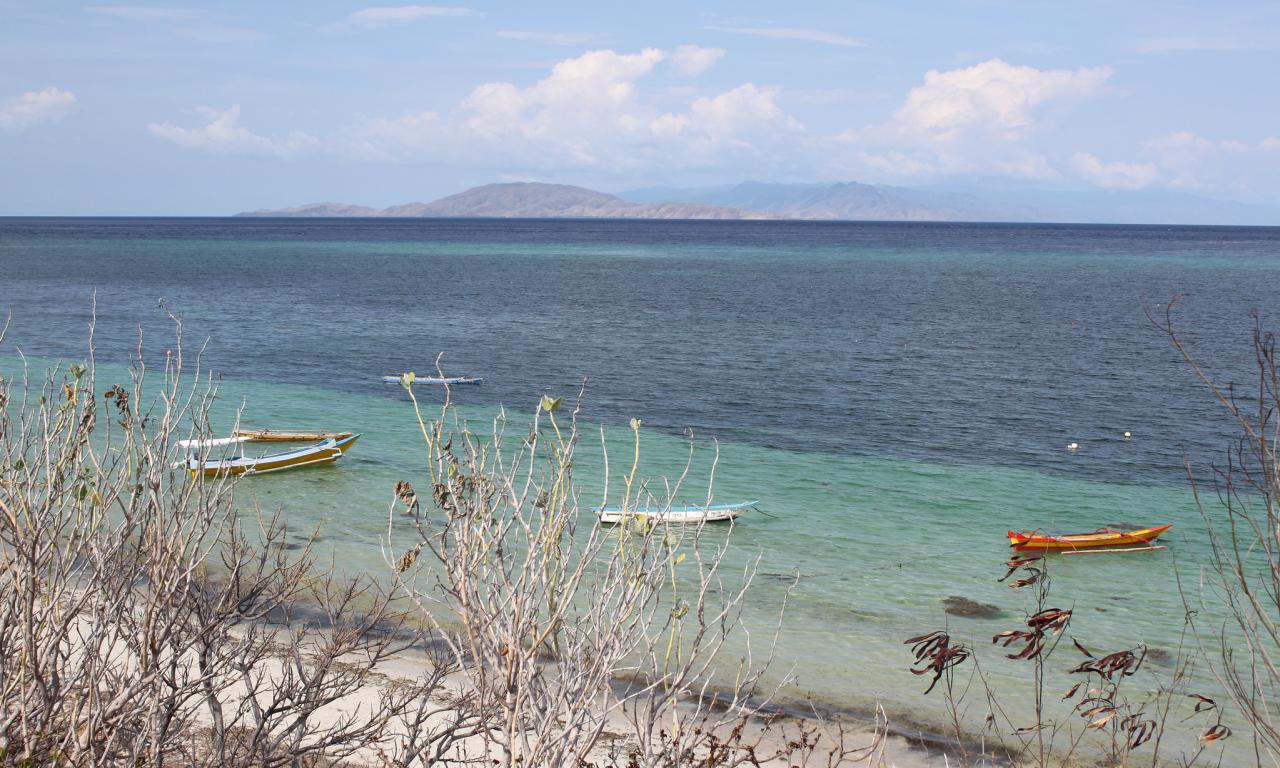
New research from Timor-Leste has found that nearshore fish aggregating devices (FADs) can significantly increase catch rates by small-scale fishers, and could provide a cost-effective way to boost food and nutrition security in the country.
Recommended publications
- Nearshore fish aggregating devices (FADs) for food security in Solomon Islands
- The contribution of nearshore fish aggregating devices (FADs) to food security and livelihoods in Solomon Islands
- Optimising the use of nearshore fish aggregating devices for food security in the Pacific Islands
New research from Timor-Leste has found that nearshore fish aggregating devices (FADs) can significantly increase catch rates by small-scale fishers, and could provide a cost-effective way to boost food and nutrition security in the country.
FADs are floating objects that are used by fishers to attract oceanic fish. In offshore fisheries high-tech, free-floating FADs are commonly used by industrial fishers to catch tuna and other schooling fish. Deploying smaller, more affordable devices closer to shore means they can be used by small-scale fishers to increase their catch.
The research, Nearshore Fish Aggregating Devices (FADs) show positive outcomes for conservation and sustainable development in Timor-Leste, involved a cost-benefit analysis of nearshore FADs at four ecologically different sites across the country. It is the first study of its kind in Timor-Leste, and one of only a few into nearshore FADs globally, helping to fill a critical knowledge gap. The work was led by the CGIAR Research Program on Fish.
“Our research found that nearshore FADs had a significant effect on increasing catch rates,” explains lead author Alex Tilley, Scientist, WorldFish.
“Most fishers in Timor-Leste are small-scale and depend on coastal reef fisheries. Nearshore FADs allow people to fish away from the reef, and catch a very productive, sustainable and highly nutritious source of fish that they wouldn’t normally access, without buying different gear or bigger boats. Since FADs bring fish together, they are easier to catch, meaning fishers spend less time searching out at sea,” Tilley says.
“Not only that, we found their catches were dominated by fish that are abundant and more sustainable, like sardines, mackerels and scads, which accounted for 96 percent of the fish catch. Fishing these three species is sustainable - they are small-bodied, and reproduce quickly and in high numbers - and this eases pressure on the local reefs
The devices cost around USD 1200 and paid for themselves in five months or less at three out of four sites. “This is significant given that they typically lasted 11 months before snapping off their moorings,” he said, noting that FAD floats can often be recovered and redeployed.
“Nearshore FADs allow people to fish a very productive, sustainable and highly nutritious source of fish that they wouldn’t normally access” – Alex Tilley, lead author
The research, just published in Frontiers in Marine Science, was undertaken as part of the Fisheries Sector Support Programme (2016–2019) led by WorldFish and funded by the Royal Norwegian Embassy in Jakarta.
Research partners were Victoria University of Wellington (New Zealand), University of Bergen (Norway), Talking Oceans Foundation (Colombia) and the Australian Research Council Centre of Excellence for Coral Reef Studies (Australia).
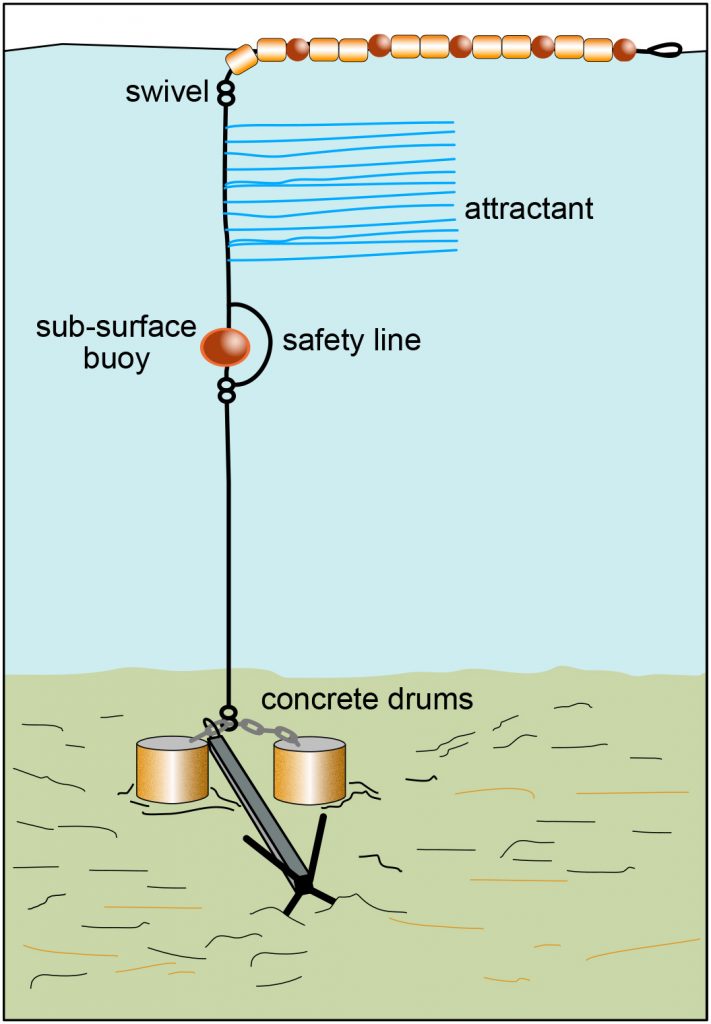
Enhanced food and nutrition security
The research highlights that investment in a national nearshore FAD program in Timor-Leste could increase overall fish catches and contribute to sustainable nutrition security in the country.
Rates of malnutrition, specifically stunting, caused by micronutrient deficiency, are some of the highest in the world and fish consumption varies greatly in the half-island nation. In coastal areas, fish consumption is 17 kg per person per year, compared to only 4 kg/person/year in inland areas.
“Currently, fish prices are prohibitively high for many rural consumers, mainly because people aren’t catching or farming enough fish,” says co-author David Mills, Timor-Leste Research Lead, WorldFish. “But there’s also poor connectivity between fishers and markets, so fish that are landed often don’t make it in sufficient quantities to the markets inland.
“But if fishers caught more - with the help of nearshore FADs - and the links to inland markets were improved, fish could become a much more affordable and accessible food source. In addition, the kinds of small pelagic [oceanic] fish that nearshore FADs attract are particularly rich in oils and vitamins.”
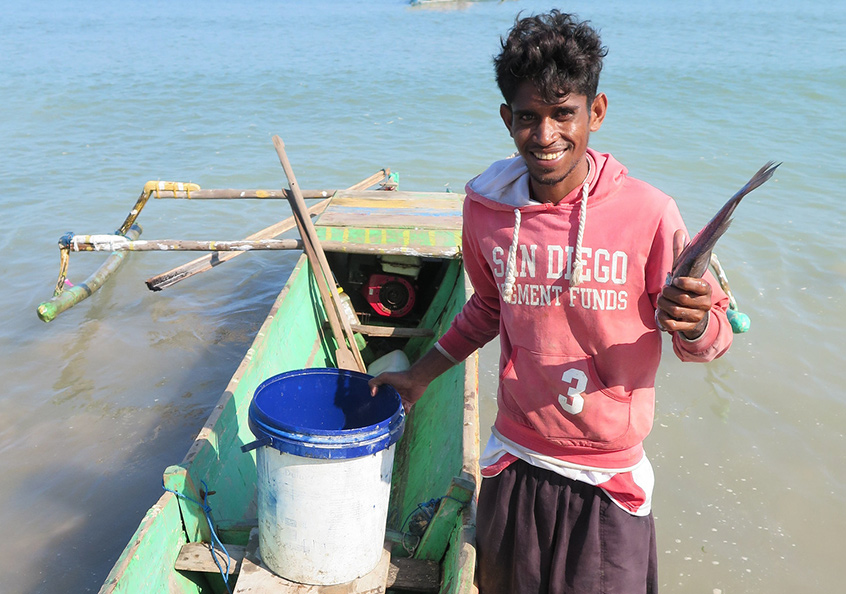
Nearshore FADs can also provide greater legitimacy for community management of marine resources when placed alongside conservation areas, as in Adara on Timor-Leste’s Atauro Island. Closing an area means people often lose a fishing ground but putting a nearshore FAD alongside it provides somewhere for displaced fishers to continue to catch fish
Implementing a national nearshore FAD program
In implementing a national FAD program, the research authors urge that sites should be chosen carefully, with consideration given to local topography and ecology. “A nearshore FAD can’t be deployed on a seabed with a steep slope, for example, as it simply won’t last,” says Mills. “So remote sensing and contour mapping of the sea floor need to be done first.”
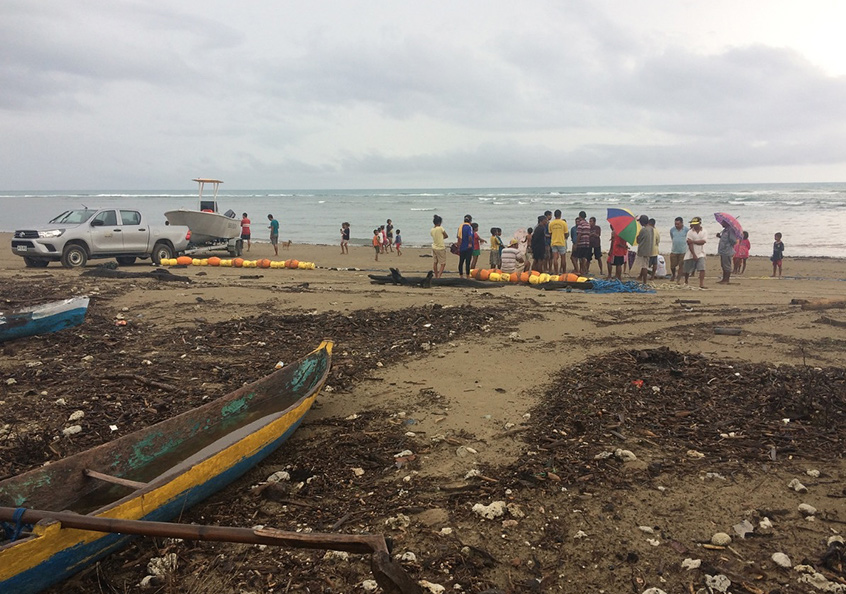
Equally important are social considerations, which have a huge impact on the longevity of a FAD. “The community needs to develop management plans around them to avoid benefits only going to the most powerful fishers,” says Mills.
As part of implementation, fishers should be trained in approaches to ensure sustainability of the fishery, both in terms of maintaining the FADs so they aren’t lost prematurely, and in their role in helping to manage the fishery itself. “Given that it’s a community resource, it’s important to get everyone onboard with managing it.”
Building on research learnings
Despite the focus of the new research on Timor-Leste, Tilley says the work provides important knowledge for other developing countries.
“There’s no reason why this work shouldn’t apply in any country where there is high pressure on coral reef fisheries, or where nearshore artisanal fishers are struggling to access pelagic fish.”
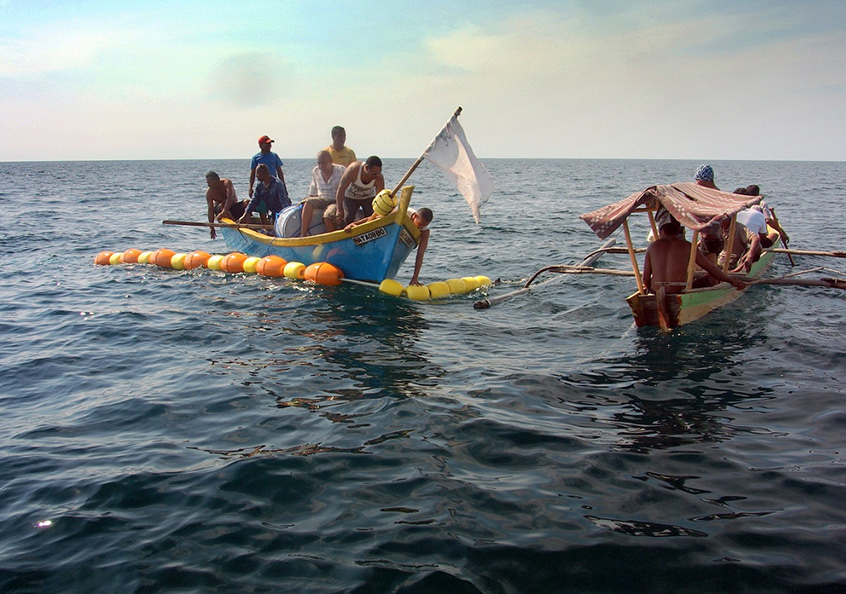
Building on this research, Tilley is now looking at how fishing behaviour and catch rates change over time around nearshore FADs, and how this can be incorporated into food production models , as part of the Integrated Data Pipeline for Small-Scale Fisheries project.
The project will install 500 tracking devices on fishing vessels around the coastlines of Timor-Leste. Positional data will be transmitted through cellular networks, and artificial intelligence and machine learning tools will be developed to identify patterns in fisher behaviour and fish production.
“Our ultimate goal is to develop a near real-time dashboard that automates the majority of analysis informing the decision-making by the Ministry of Agriculture and Fisheries,” says Tilley, highlighting the need to continue this vital work on nearshore FADs.